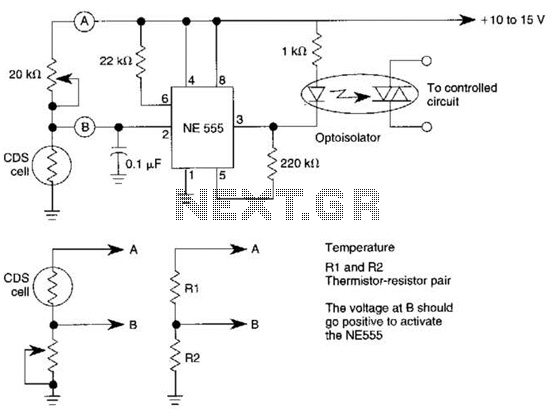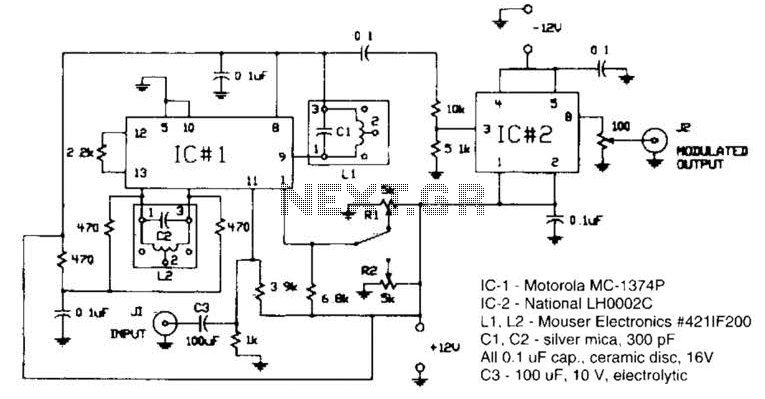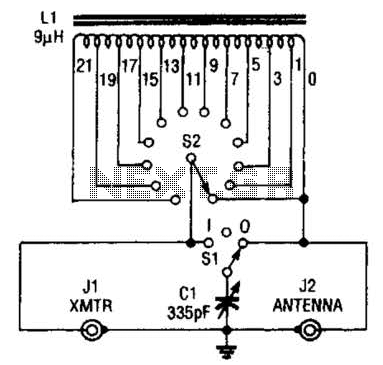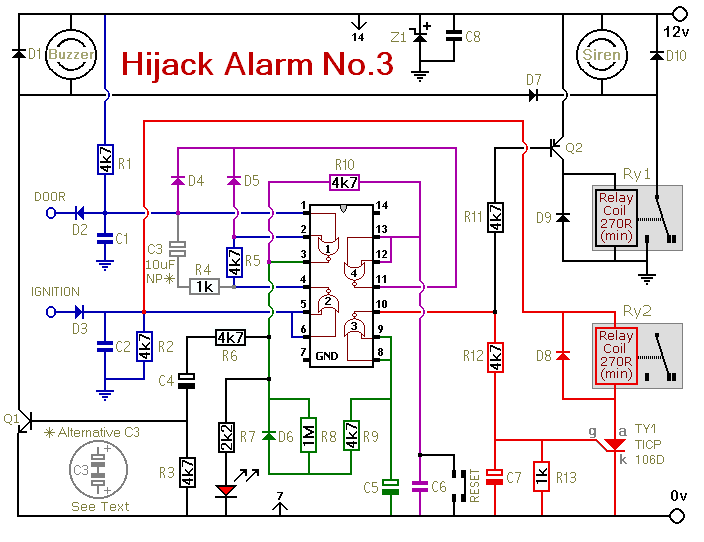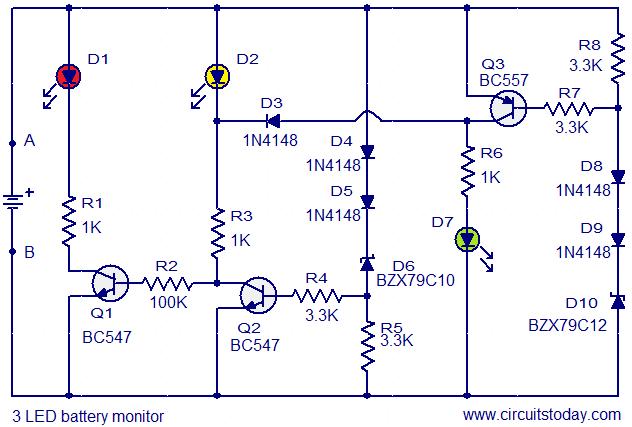
one second audible clock circuit schematic
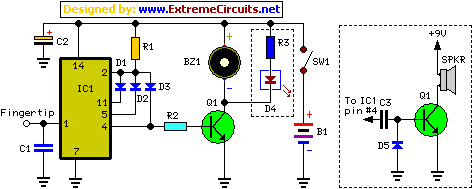
This precise one-pulse-per-second clock is constructed using a few common components and is driven by a 50 or 60 Hertz mains supply without a direct connection to it. An audible beep or a metronome-like click, along with a visible flash, will indicate the one-second interval and can be beneficial in various applications where a time-delay counting in seconds is required. The circuit utilizes a CMOS 4024 counter/divider chip and three diodes, configured to divide the frequency of the input signal at pin #1 by 50 (or 60, as noted).
The one-pulse-per-second clock circuit is designed to provide an accurate timing signal that can be used in a variety of applications, including timers, clocks, and metronomes. The circuit leverages the CMOS 4024 counter/divider chip, which is capable of dividing down the frequency of an input signal to achieve the desired output frequency.
The operational principle involves feeding a stable 50 or 60 Hertz signal into pin #1 of the CMOS 4024. The chip is configured to divide this input frequency by a factor of 50 or 60, depending on the mains frequency in the region of use. This division results in a clean one-pulse-per-second output, which can be accessed from one of the output pins of the CMOS 4024.
In addition to the counter chip, the circuit includes three diodes that serve to rectify and shape the input signal, ensuring that the CMOS chip receives a clean and stable waveform. This configuration helps to prevent any potential noise or fluctuations in the mains supply from affecting the timing accuracy of the output signal.
The output pulse can be utilized to drive a speaker or buzzer for an audible indication, or it can be connected to an LED for a visual cue. The combination of both audio and visual signals enhances the usability of the clock circuit in various applications, making it suitable for educational tools, timing devices, and other electronic projects where precise timing is essential.
Overall, this one-pulse-per-second clock circuit is a simple yet effective solution for generating accurate timing signals, leveraging commonly available electronic components to achieve reliable performance.This accurate one-pulse-per-second clock is made with a few common parts and driven from a 50 or 60 Hertz mains supply but with no direct connection to it. A beep or metronome-like click and/or a visible flash, will beat the one-second time and can be useful in many applications in which some sort of time-delay counting in seconds is desirable.
The circuit is formed by a CMos 4024 counter/divider chip and 3 diodes, arranged to divide the frequency of the input signal at pin #1 by 50 (or 60, see Notes).. 🔗 External reference
The one-pulse-per-second clock circuit is designed to provide an accurate timing signal that can be used in a variety of applications, including timers, clocks, and metronomes. The circuit leverages the CMOS 4024 counter/divider chip, which is capable of dividing down the frequency of an input signal to achieve the desired output frequency.
The operational principle involves feeding a stable 50 or 60 Hertz signal into pin #1 of the CMOS 4024. The chip is configured to divide this input frequency by a factor of 50 or 60, depending on the mains frequency in the region of use. This division results in a clean one-pulse-per-second output, which can be accessed from one of the output pins of the CMOS 4024.
In addition to the counter chip, the circuit includes three diodes that serve to rectify and shape the input signal, ensuring that the CMOS chip receives a clean and stable waveform. This configuration helps to prevent any potential noise or fluctuations in the mains supply from affecting the timing accuracy of the output signal.
The output pulse can be utilized to drive a speaker or buzzer for an audible indication, or it can be connected to an LED for a visual cue. The combination of both audio and visual signals enhances the usability of the clock circuit in various applications, making it suitable for educational tools, timing devices, and other electronic projects where precise timing is essential.
Overall, this one-pulse-per-second clock circuit is a simple yet effective solution for generating accurate timing signals, leveraging commonly available electronic components to achieve reliable performance.This accurate one-pulse-per-second clock is made with a few common parts and driven from a 50 or 60 Hertz mains supply but with no direct connection to it. A beep or metronome-like click and/or a visible flash, will beat the one-second time and can be useful in many applications in which some sort of time-delay counting in seconds is desirable.
The circuit is formed by a CMos 4024 counter/divider chip and 3 diodes, arranged to divide the frequency of the input signal at pin #1 by 50 (or 60, see Notes).. 🔗 External reference

